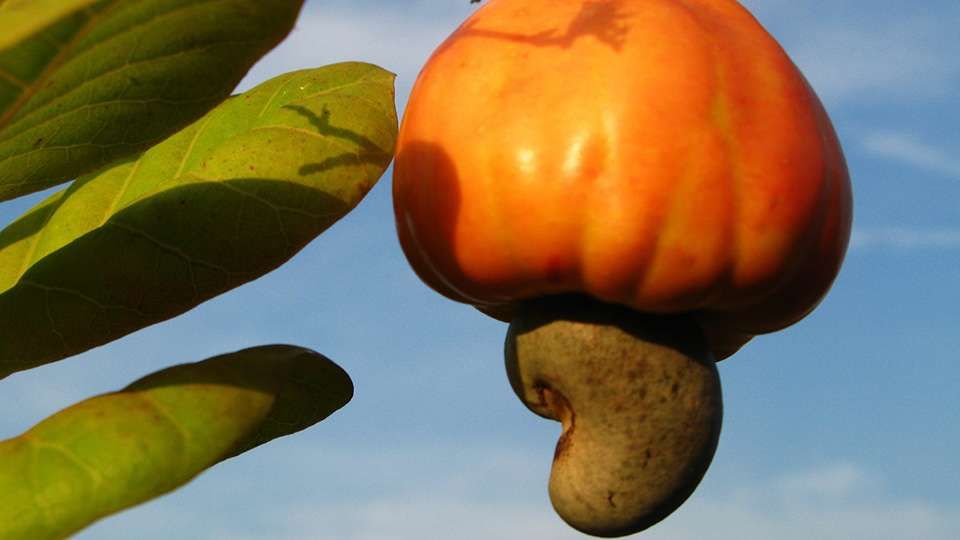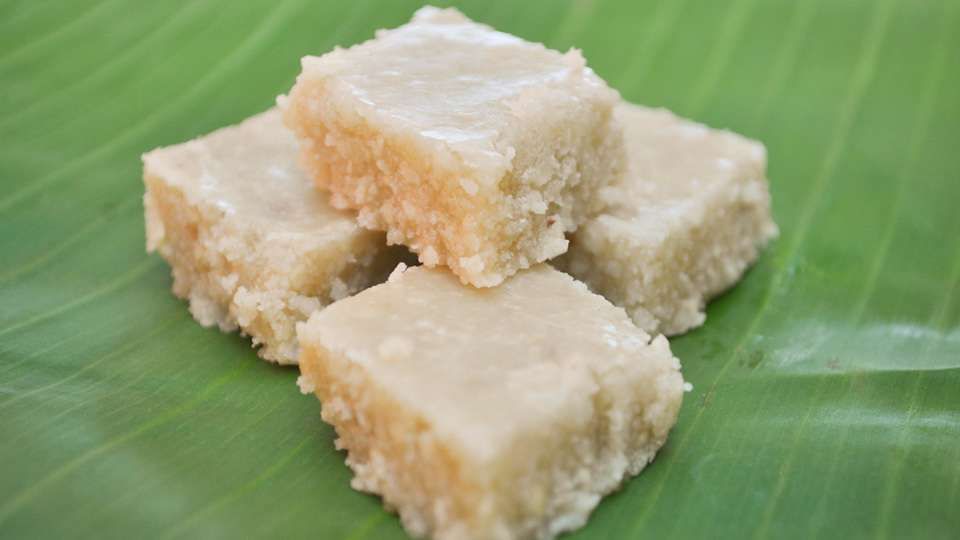Kaju Katli Recipe and Cashew Pakodas - Sweet and Spicy Combo!
The second set of our delicious Diwali recipes are based on a very odd nut that isn’t really a nut – the cashew nut. Here are some delicious burfis and spicy pakodas.

After last week’s South Indian delicacies, the second set of our Diwali recipes are based on cashew nuts, or kaju, as they are known in India. We present a sweet kaju katli recipe and a spicy cashew pakoda recipe, to give you the best of both kind of snacks.
Cashew Burfi or Kaju Katli Recipe
Caution: This kaju katli recipe results in extremely tasty burfis which may leave you wanting more and more!

This recipe yields thirty 2-inch pieces
- Cashew nuts – 1 cup
- Sugar – 1 cup
- Water – 3/4 cup
- Cardamom – a pinch
- Ghee – 6 tbsp
- 8-inch diameter serving plate (stainless steel/glass)
Subscribe
Apply ghee to the plate and keep it aside. Grind the cashew nuts into a fine powder in a blender. Ensure this does not become a paste. Heat a pan and add water and sugar. Allow this sugar syrup to boil until it reaches single-string consistency. (One-string consistency can be checked by lifting a ladle from the syrup. If the syrup drops in a single string and not two or three, it has reached the proper consistency.)
Gently add the powdered cashews in small quantities while stirring and folding it into the sugar syrup. Make sure lumps do not form by stirring continuously. Add ghee in small quantities while continuing to stir. Once the mixture becomes thick, slightly bubbling, and is no longer sticking to the edges of the pan, the mixture is ready. Pour the burfi mixture onto the plate with ghee. Allow it to cool for about 30 minutes and then cut into 2-inch squares.
That's it for our kaju katli recipe. Now that the sweet is done, let's add some spice with our Cashew Pakoda recipe.
Cashew Pakoda Recipe

This recipe yields four servings.
- Cashew nuts – 1 cup
- Ragi flour – 1 cup
- Rice flour – 1/2 cup
- Corn flour – 1/2 cup
- Finely chopped mint leaves – 1/4 cup
- Fennel seeds – a few
- Ginger – 1/4 inch
- Red chili powder – 1 tsp
- Salt – a pinch
- Melted butter – 2 tsp
- Water
- Oil
Mix all the ingredients except the oil with sufficient water to make a soft dough. Heat the oil and drop small clumps of the dough into the oil. Fry until the cashews in the dough are golden brown. Remove onto a plate lined with a paper towel (to remove excess oil). Serve!
About Kaju aka Cashew
Cashew aren’t really nuts but seeds which grow at the bottom of cashew “apples.” Cashew apples are fragile, perishable fruits that are occasionally used in juices, jams, curries, and also in liquor and wine. The cashew apple has a singular taste and smell and is one of those odd foods that some people fall in love with and others absolutely cannot stand.
Hanging from the bottom of the cashew apple is the cashew nut. Cashew nuts are excellent for keeping a healthy heart, maintaining a stable blood pressure, and strengthening the bones and nerves. However, the nut is initially covered in several layers of a caustic substance called anacardic acid, which can cause skin rash and is designed to keep animals (and humans) from consuming the cashew seed. To make the cashew seed edible, it is typically processed to neutralize this substance and then shelled. The acid isn’t all bad and has its uses. It is mildly antibacterial and antifungal and is also used against termites. It is also used by some to cure toothaches.
Oddly, in many places like South America and West Africa, the cashew apple is a delicacy and the nut is usually ignored, while in India and East Africa, most of the cashew apple crop is not eaten and the nut is the focus of recipes and preparations.
Editor’s Note: Get the latest updates from the Isha Blog. Twitter, facebook, rss or browser extensions, take your pick.

 Program Finder
Program Finder
